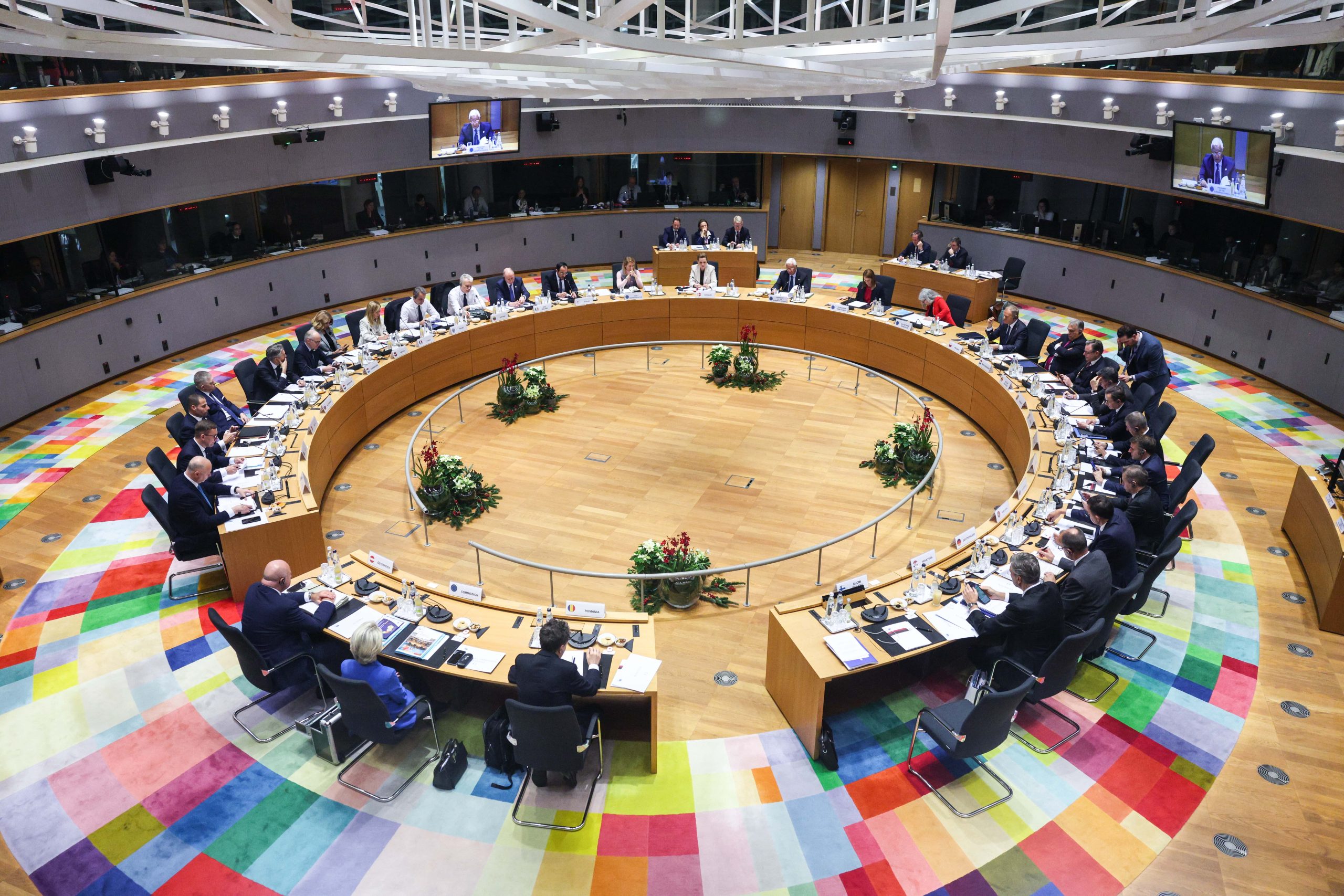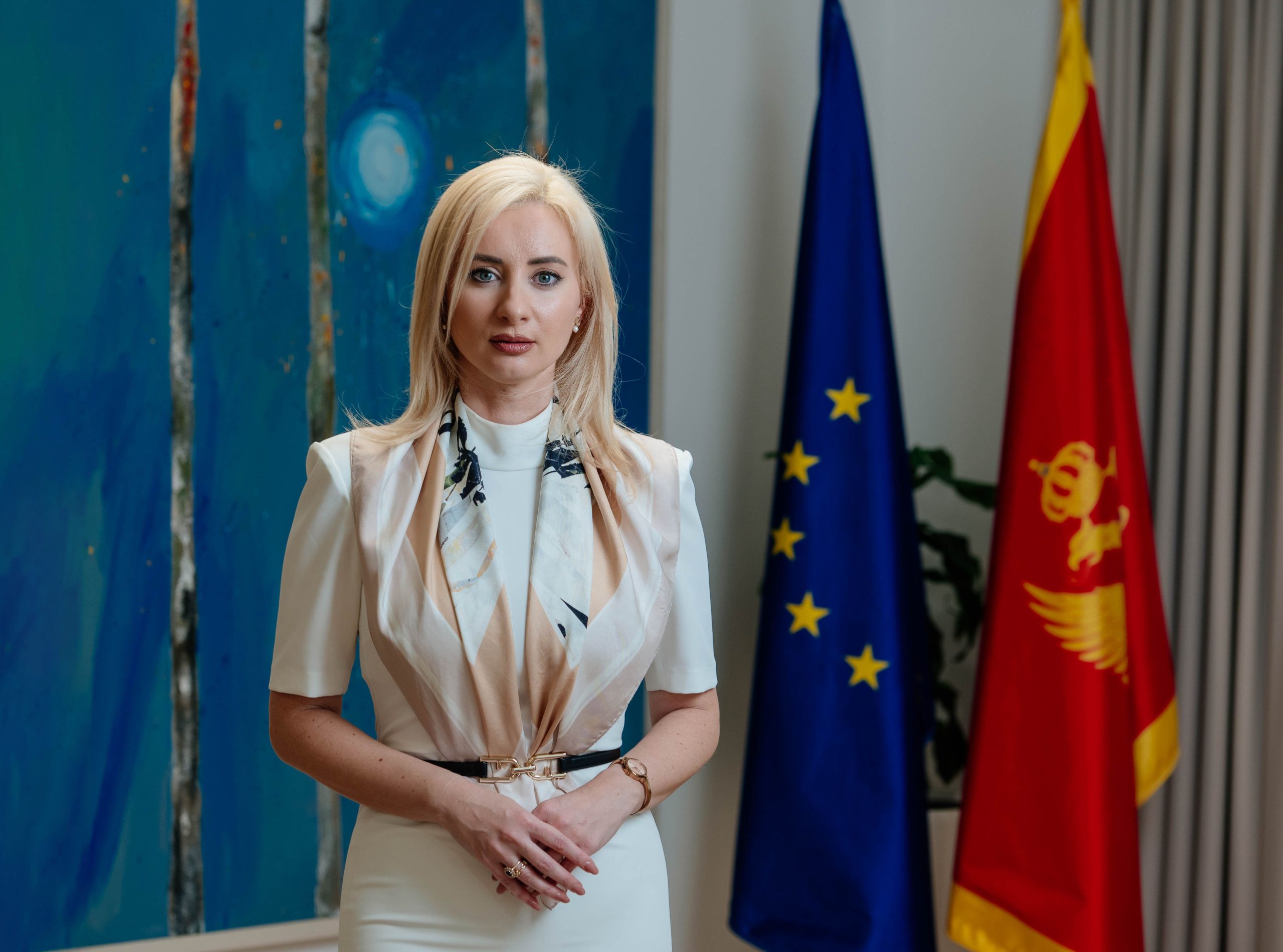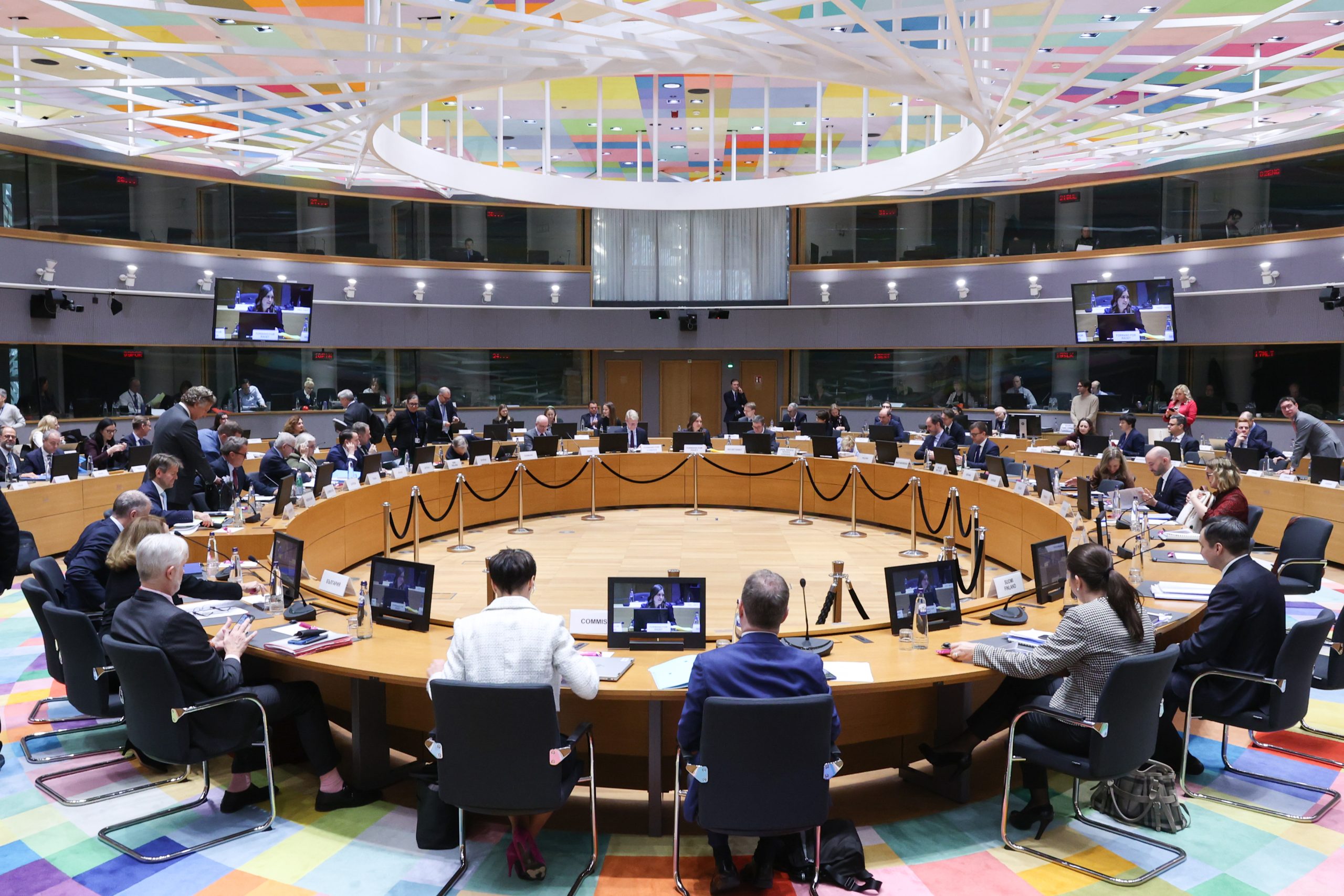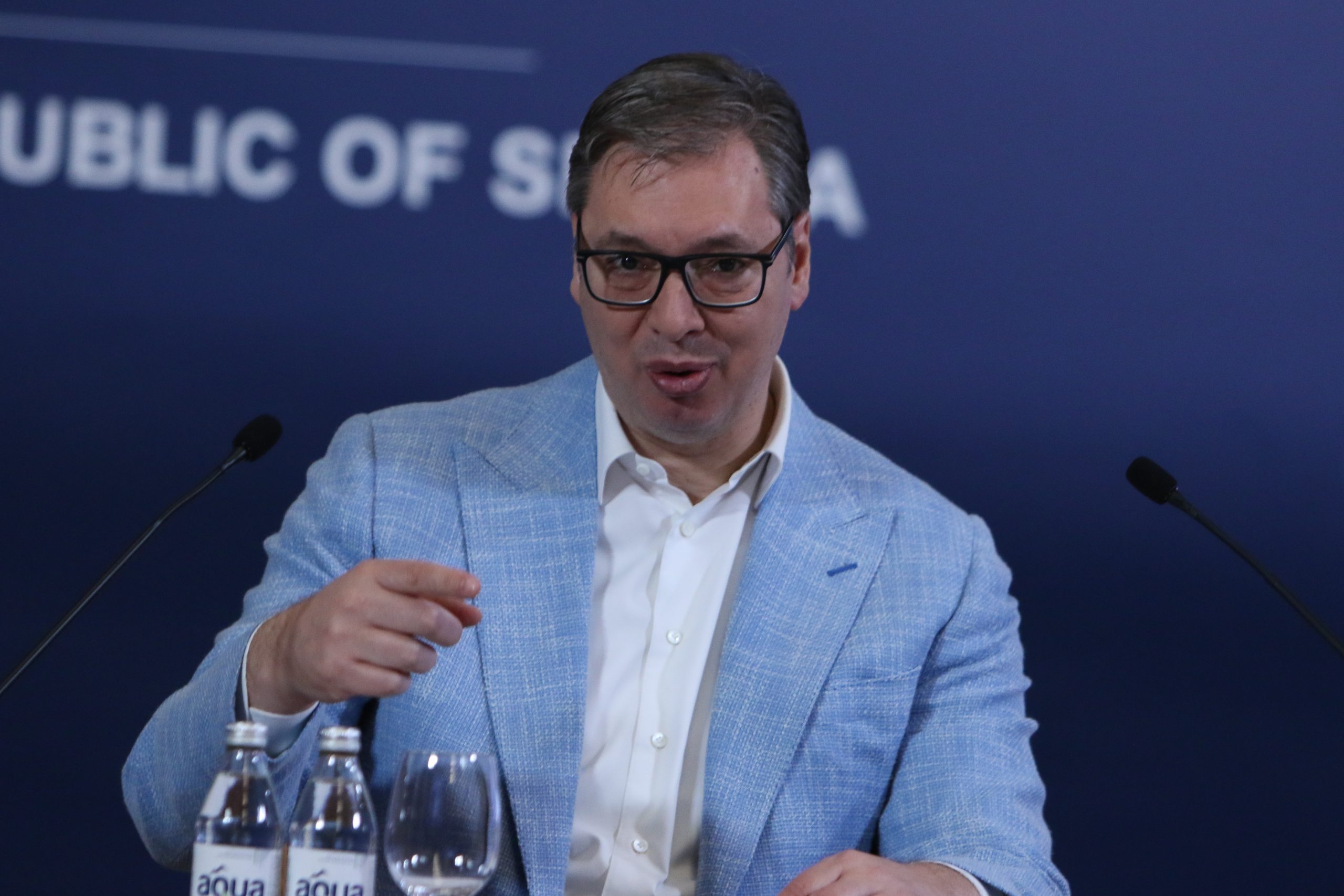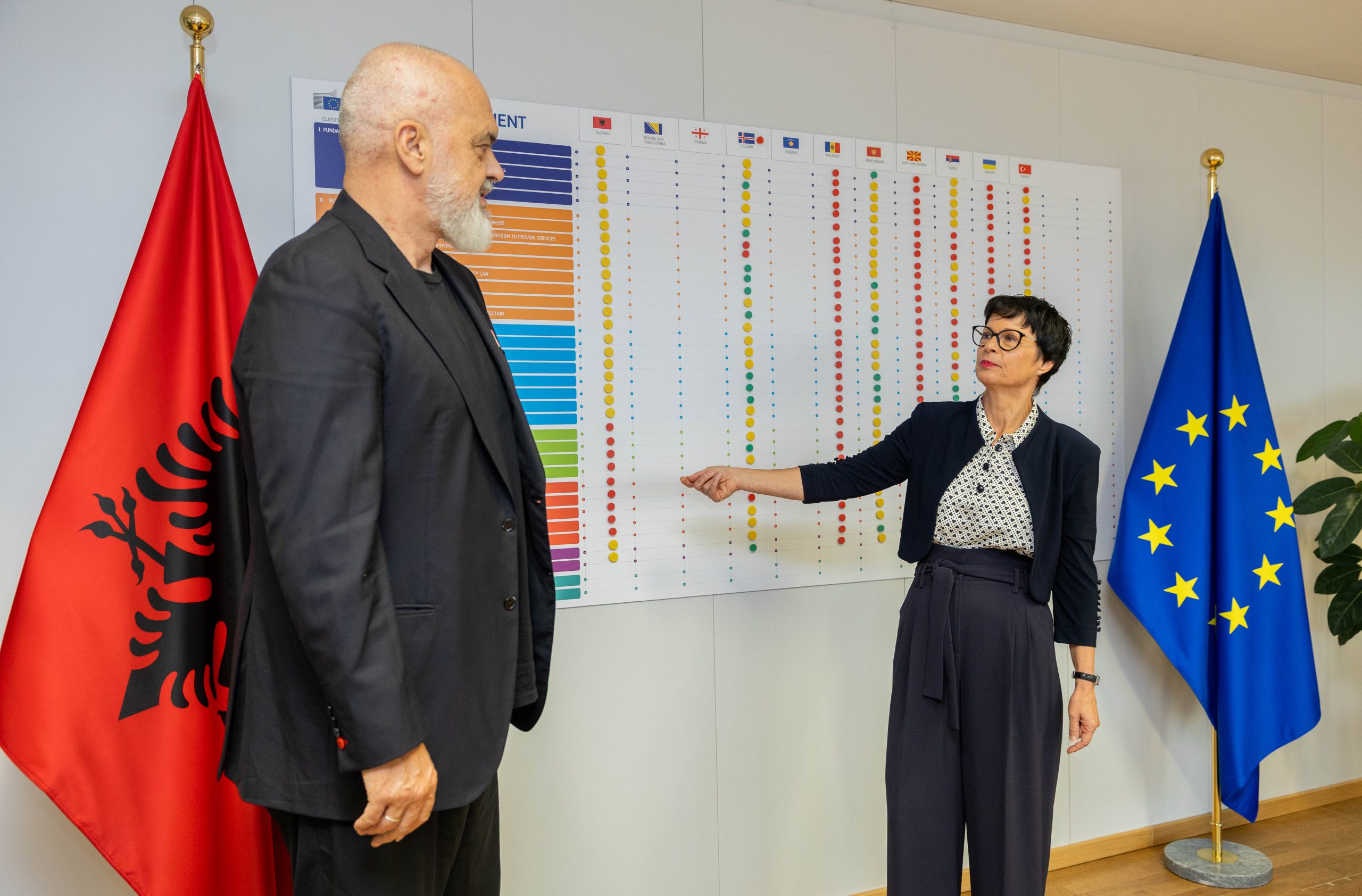The article was originally published in Serbian.
The European Parliament has recently adopted a resolution on a new EU enlargement strategy. It calls for a reconsideration of “any bilateral and EU funds for Serbia that would benefit the Serbian authorities, in particular, any pertaining to projects financed under the Western Balkan Economic and Investment Plan, in order to ensure that all EU expenditure is fully in line with the EU’s strategic goals and interests“ having regard to a compliancy with The Common Foreign and Security Policy. Although EP resolutions are not obligatory, they present probably the last warning that Brussels is about to change its attitude towards Belgrade if it remains neutral on the war in Ukraine.
The problem with the EU financial assistance “application” thus far is twofold. First of all, the citizens of Serbia are not fully acquainted with the amount of money that is put at risk (more than 200 million euros yearly, based on the most optimistic or conservative assessment) because the Serbian government diminishes or leaves unsaid the importance of that aid. Consequently, more and more citizens are indifferent towards future EU membership, according to CRTA’s research from the end of September and beginning of October.
Secondly, Serbia lacks technical capacities (or political will) and therefore didn’t use the received funds from the EU properly. For years the promised amount on paper does not match the one used for local government budgets, companies and agricultural sector only because Serbia avoids to deal with it. There’s simply not enough emploees to work on the open call for allocation of these funds.
These two facts make everything easier for Belgrade in case it reconsiders rejecting to comply with Brussels’ position, which could stop further progress on the EU membership path and cause losing funds ahead of a new economic crisis.
The carrot-and-stick approach is nothing new. In May the German Bundestag suggested to withhold funding of candidate countries which refuse to impose sanctions on Russia. There’s only one on the list – Serbia.
The war in Ukraine intensified the questioning of the use of common funds, given that there are dissonant voices even among member states, related not only to Common Foreign and Security Policy. For example, Poland is currently at risk of losing 110 billion euros in grants and cohesion funds up to 2027 due to conflicts with the European Commission over judicial reforms.
On the other hand, Serbia has not used the potential of EU grants and is more and more often finding alternative sources for refinancing debts or covering deficits. An example is a billion dollar loan with 3% interest that President Aleksandar Vučić agreed with the United Arab Emirates in September.
These funds, at least according to the politicians in power (because we don’t have any additional information for now), will be used for paying off already existing debts which are coming due.
Those financial sources are preferable for official Belgrade, bearing in mind strict spending controls that EU institutions impose as a precondition for receiving the funds.
Despite the free money from the EU, which would be accessed according to strict procedures, Serbia thus chooses a more expensive and non-transparent path. The analysis of the budget for 2023 indicates that Serbia will deal with 8.7 billion euros shortage for regular financing of the state, which we will get either by borrowing or by selling public property. Borrowing is increasingly expensive due to rising interest rates.
How much does Serbia get from the EU?
So far, Serbia has received over 3.7 billion euros in donations from the European Union: to strengthen the rule of law, undertake administration reforms, foster environmental protection etc. Through the Instrument for Pre-accession Assistance (IPA), Serbia can receive over 200 million euros per year. By using that money, many things are built among others – roads and bridges, as well as new landfills in several municipalities in Serbia.
From 2000 untill now, EU support to the transport sector in Serbia has exceeded 420 million euro in grants. The Union is also the biggest donor in the energy sector, in which it has invested over 830 million euros so far.
According to the data of the Delegation of the European Union, the EU invested about 2.8 billion euros in grants and another 6.5 billion euros in soft financing of about 300 projects, all that in the period between 2007 and 2020.
Through the IPARD programme (Instrument for Pre-accession Assistance for Rural Development), a special part of the IPA funds, additional 230 million euros that have been set aside for farmers by 2020 remained mostly unspent.
Serbia also receives an indirect aid through EU programmes, such as “Erasmus Mundus” or “Tempus” Fondation, funds for support programmes for civil society and refugees within the Regional Housing Programme and so forth.
One of the main purposes of the IPA instrument is to build administrative capacities for accession funds intended for EU member states through the Cohesion Policy of the European Union. Cohesive funds, as evidenced by the above-mentioned example of Poland, are significantly more generous than pre-accession funds.
Estimating what Serbia has already lost because it did not join the EU is a matter of rough calculation.
The price of a long road to Europe
The analysis conducted last year by the European Movement in Serbia indicates that in the period from 2014 (when the accession negotiations were opened) until 2020 (when the corona crisis began), Serbia received 1.1 billion euros neto yearly, i.e. 7.7 billion euros overall, in the name of structural funds and donations in funds and goods, said Vladimir Međak, a former member of the negotiating team of the Serbian government for EU accession.
Međak reminds that the funds available to EU member states are several larger, which is why Serbia lost more than tens of billions of euros in the last couple of decades by still not being an EU member state.
“In the period from 1990 untill 2027, Bulgaria received or will receive 43 billion from EU structural funds. Serbia a bit less than 4 billion. That’s why Bulgaria has no problem with borrowing, it doesn’t have to think who will lend the money and under which conditions. Economic differences between Serbia on the one hand and Bulgaria, Romania, Hungaria on the other hand – will only increase. It’s because we simply don’t play the same game,” according to Međak.
For example, soon after the COVID-19 pandemic Serbia took out a loan of two billion euros, while Croatia requested 10.5 billion by 2027. More than half of the amount is non-refundable, the rest is at a lower interest rate than the one that Serbia gets.
Međak estimates that the utilization of IPA funds was quite intensive and in some years amounted to 100 percent. However it has been decreasing to “30, 40, 80 percent” in recent years.
“That’s normal, because you’re still using the funds that were intended for 2017, for instance. Utilization is good also because we are talking about relatively small funds, from 200 to 250 million euros per year, which is for Serbia not so difficult to spend. Unfortunately, that amount has not been increased since 2001. And that’s the problem, because the importance of 200 million euros back then, when Serbia’s budget was around two billion euros, and now when it is ten times bigger – it is not the same. At that time, it was almost 10% of the annual budget, and now it is a drop in the ocean in comparison to other public spending”, said Međak.
He also states that Western Balkan countries have been proposing for years “rewards” for progress in the European integration process by increasing the pre-accession aid, because at the moment of joining the EU, the cohesion funds for less developed member states are about to reach almost two percent of GDP, which would amount to approximately one billion euros in the case of Serbia currently.
“If we could jump from 200 million to one billion euros in one day – we would not be able to spend all that money. This is exactly what happened to the countries after accession – for years the funds remained unused because of the lack of capacity. Serbia already has to quickly build capacities (for access to additional funds). We have a big problem because many people leave the administration”, adds Međak.
Despite the good utilization of structural IPA funds, Serbia, according to him, “missed the opportunity” to make better use of IPARD funds, intended to strengthen agriculture. For example, annual EU aid for agriculture in Croatia has increased 14 times since it joined the Union.
“That’s where we failed. Information I have is that out of 175 million euros allocated for agriculture, Serbia used only ten million,” Međak emphasises.
According to him, domestic institutions did not make an average Serbian farmer familiar with the possibility of using those funds.
“The administration must first be able to enable them access to those funds. Even if we entered the EU now – we would not be able to use the money for agriculture, although we as an agricultural country could enormously benefit from that. Up to now over 175 million from IPARD have been directed primarily on infrastructure, less on production or irrigation, where we fall behind. And then we will have to return the transferred money, because it cannot stay forever in Serbia’s account – everything that has not been used will return to the EU,” Međak said.
Meanwhile, all public opinion surveys in Serbia indicate that citizens overestimate aid from other foreign policy actors, such as Russia and China, while underestimating EU funds. Međak believes that a ten-year campaign led by representatives of the government is responsible for that.
“Why does the EU give money and keep silent – that’s its problem. It will have to explain to their taxpayers why they give their money to someone who has been campaigning against the EU, NATO and the West for ten years. The European Parliament recognized this. If you lie to the citizens for ten years, and they don’t bother to find out the truth, then it’s no wonder that people are disconnected from reality”, claims Mađak.
In order to bring the direct benefits of EU money closer to the citizens, the fake news campaign must stop.
“For example, the EU finances the intermodal terminal in Batajnica and you have media reports and photos from of the opening. On the pages of our newspapers, the flags of the European Union are hidden by headlines. You can only see Vučić, the entourage, Serbian flag, but no EU flag anywhere. This is done on purpose. On the other hand, you have billboards in the center of Belgrade offering “thanks” to China,” Međak concluded.
At a time when the world economic crisis is on the horizon, with an enormous increase in the cost of borrowing, no country can afford to forego any financial assistance. Agriculture is especially badly affected by the current prices of diesel and fertilizers.
Accession funds are preparation for EU membership
Strahinja Subotić, program manager and senior researcher at the European Policy Centre (CEP), states that funds did not increase significantly during the transition from IPA 2 to IPA 3, on thr contrary if we bear inflation in mind.
Until recently there were no political criteria for the use of the funds, since IPA 3 was not created for the needs of Serbia, but for the entire Western Balkans and Turkey.
“The goal of IPA 3 was not to talk about national packages, but about a regional approach, in which countries should work on themselves and mutually compete over EU funds as much as possible. By adopting the regulation for IPA 3, the Union outlined a clear set of goals, they were transparent and clear about what they wanted to achieve. However, funding requires considerable administrative capacity, which means it is not easily obtainable”, explains Subotić.
Exactly because of the lack of administrative capacity, no country in the Western Balkans has been able to use all the means available. “Even member states themselves have problems to utilize the structural funds”, adds Subotić.
Freezing of funds is a relatively new “explicit threat” that the European Parliament started to mention only from this summer, with an argument that they will not tolerate further democratic decline in Serbia, states the CEP representative.
“The European Commission is lenient towards the region. Legally they have the option (to withhold funds), however, the political reality is different. Serbia will continue to lose allies within the EU who support it or at least tolerate it,” he said.
The opinion that EU funds are a “piggy bank” assigned to Serbia regardless of the progress of democratic reforms, according to Subotić, is harmful. The funds themselves were created in order to reduce socio-economic gap between membership candidates and members of the Union.
“We see that the gap does not decrease too much, and that democracy is regressing. The allocated money doesn’t completely achieve the goals for which it is intended. Everything we do now should not only enable us to live better now, but prepare us to be an effective member state. CEP’s internal assessment is that Serbia as a member country will have to contribute with 500 million euros to the common European budget each year. In the meantime the number could increase, depending on the moment when we become a member of the EU. Also, membership means that the fund size will increase five to seven times. Mandatory payment into the common budget and conditional funds mean that the EU is an expensive toy for irresponsible states,” Subotić believes.
According to him, Serbia already needs to develop long-term projects for which it will apply, to train personnel and, of course, to depoliticize the entire structure in order to maximize benefits not only from the pre-accession process, but also from future membership.
This article is published within the project “Supporting media freedom in Serbia in relation to the EU accession process”, implemented in cooperation with EUROPEUM Institute for European Policy and supported by the Ministry of Foreign Affairs of the Czech Republic. The views expressed in this article do not represent those of the EUROPEUM Institute or those of the Ministry of Foreign Affairs of the Czech Republic.


